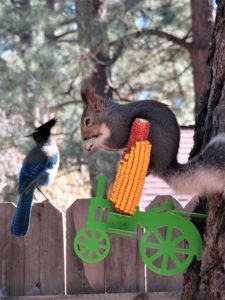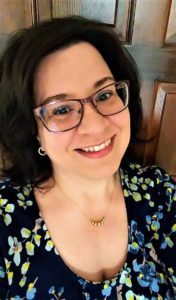 The sun has just risen and I’m outside in my slippers and pajamas using a kitchen knife to no avail. The window screen, so easy to remove a few weeks ago during warmer weather, is firmly stuck, perhaps frozen, in place. The outdoor thermometer hovers around 30 degrees. I go back indoors, open the window and push the screen out, then run back outside with a squeegee, window cleaner and rag. Now I can wash the windows again.
The sun has just risen and I’m outside in my slippers and pajamas using a kitchen knife to no avail. The window screen, so easy to remove a few weeks ago during warmer weather, is firmly stuck, perhaps frozen, in place. The outdoor thermometer hovers around 30 degrees. I go back indoors, open the window and push the screen out, then run back outside with a squeegee, window cleaner and rag. Now I can wash the windows again.
Yes, I do windows, but no, I won’t come to your house and do the same. In fact, I don’t think I’m a particularly tidy person, although my officemates may disagree. I have almost given up on my desire to be the type of homemaker with dust-free bookshelves and non-book-filled flat surfaces. There will always be a pile of shoes by the front door and coats hung haphazardly in the hallway. But as my nature-watching activities move indoors for the colder months, I notice how important it is to have screenless and streak-free windows. More than a certain kind of finickiness, it’s a deep desire to try to remove this barrier between me and the outdoors that I am lucky enough to have in the first place as the weather turns.
The back yard became a frenzy of activity this fall after months of trying to set up a bird haven over the summer. I can hardly keep up with the demands of our hungry visitors. After noticing seed feeders untouched all summer, I retraced my steps, carefully re-checking the bird seed bags at the grocery store to make sure I was buying the right type for the birds here in Flagstaff. I finally gave up and went to the specialty store in town and talked to a gentleman who works there. He explained that, like us, birds don’t care for stale food, which may be what I was buying at the grocery store. He showed me some fresh seed pre-mixed at his store and I bought a gallon jug. I found some other seed—Nyjer—that reminded me of a fine mix of black rice, and a net sock to put it in.
Over the next few weeks, our yard became popular. As many as seven or eight yellow finches would hang from the sock eating Nyjer; juncos and other birds came to eat the fresh new seed pre-mix. I say “other birds” because I’m still learning all the names, which can be hard when I still don’t always know the difference between a brown finch and a brown swallow. I return to the specialty store a few more times to get food and other accoutrements: a stronger type of cage for the Nyjer seed that can support more seed and more finches, a small metal tractor cutout that holds seed corn for squirrels and several flat plastic cage-like devices that hold suet seed mixes.
Every time I refill the seeds and put new corn cobs on the tractor, there’s a nagging sense in the back of my mind that I shouldn’t be doing this, that I shouldn’t be helping nature so much. That perhaps I’m upsetting some kind of balance of hunting and gathering by offering fresh seeds newly mixed and purchased at the specialty store like some gourmet cornucopia easily accessible, hung from trees in our yard. My husband doesn’t tell me that I’m being silly when I share these thoughts with him. Instead, he reminds me nature needs all the help it can get right now. As I walk my neighborhood, I can’t help but think of how all of our homes displaced creatures who used to live on this once-forested land. I wonder how many ponderosa pines used to be on this plot of land we call ours. And I feel even more guilt that the metal corn cob tractor contraption got screwed into a tree trunk instead of the side of our house or shed.
What am I doing any of this for? I hate to admit that I’m doing this for my own selfish pleasure. Sitting here at my desk, my camera trained out the window, I can’t stop admiring these small creatures. I notice the rosy pink underside of a black-capped Junco and the white “eyebrows” of the Steller’s jay. I admire the sheen and patterns on their feathers. An Abert’s squirrel holds corn kernels in his tiny paws, stuffing his mouth so full that kernels fall out and onto the ground where jays help clean up the mess. I can get lost for hours looking out the window when I should be writing. Instead, I’m reading my bird identification books and taking hundreds of photos of birds, chipmunks and squirrels. And washing my windows again in November.
I don’t truly recognize the nature person I’ve become over the past few months, and a sense of oddness settles over me now that my parents are visiting and witnessing these behaviors. I am self-conscious—will they think I’m strange? When I ask my father if I was always this weird, he assures me that I wasn’t and that he actually doesn’t think I am now. Instead, he tells me his favorite window washing solution. My mother finds a photo online of her preferred glass cleaner as well. Later in the day when my father and I go to the store, I buy his brand. When we get back home, my husband helps me take the rest of the screens off of the windows at the back of the house. Together, we wash them and I think about buying a few more shepherd’s hooks to hang more bird feeders. And I know the guy at the bird store will help me find the best winter food for the creatures I’ve started to think of as my backyard family. Maybe this is the least I can do.

